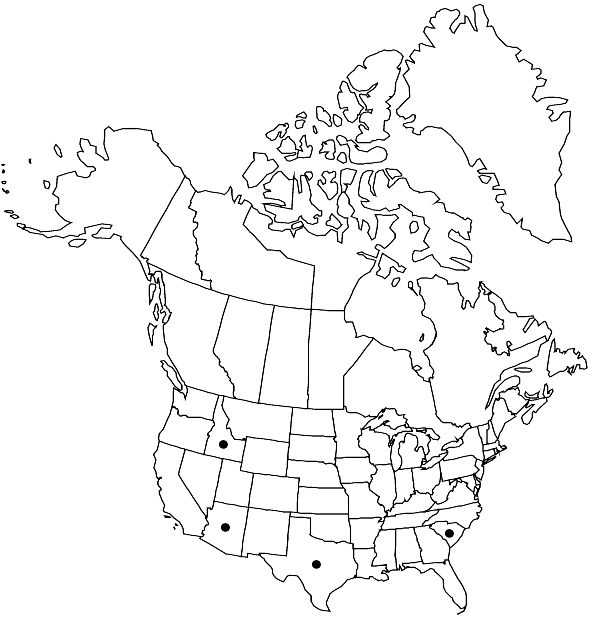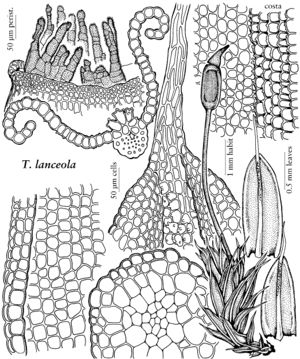Tortula lanceola
Bull. Buffalo Soc. Nat. Sci. 32: 223. 1993,.
Leaves obovate, elliptic or less commonly ovate, apex broadly acute to occasionally rounded, awned or long-mucronate, margins strongly and broadly recurved in proximal 4/5 of leaf, not bordered; costa long-excurrent, with an elongate adaxial pad of bulging, rounded cells with 3–4 simple papillae, distally narrow, 2–4 cells across adaxial surface; distal laminal cells subquadrate, 12–16 µm wide, 1:1, smooth or less commonly papillose with 1(–2) scattered simple papillae. Sexual condition autoicous. Sporophytes exerted. Seta ca. 0.4(–0.9) cm. Capsule stegocarpic, not systylius, elliptic or cylindric, or erect and nearly straight, urn ca. 0.8–1.2 mm; peristome 100–150 µm, teeth 16, ligulate straight, or short, rudimentary, basal membrane lacking or very low; operculum 0.5 mm. Spores 15–18 µm, spheric, finely papillose.
Phenology: Capsules mature spring.
Habitat: Soil or walls, often in calcareous regions
Elevation: low to moderate elevations
Distribution

Ariz., Idaho, S.C., Tex., Europe, Asia, n Africa.
Discussion
The tiny but often fruiting Tortula lanceola is uncommon in the flora area. The bulging, rounded cells of the adaxial costal pad have the distinctive appearance of cows’ udders, and viewed laterally have the appearance of longitudinal ridges. H. A. Crum and L. E. Anderson (1981) pointed out that the antheridia are borne naked in axillary clusters, but occasionally bracts, albeit rudimentary, are present. Tortula acaulon has much the same gametophyte, but the sporophyte is reduced and cleistocarpic. Tortula atrovirens and Crossidium aberrans have a somewhat similar leaf section but the former lacks an awn, and the latter has a short awn, and the adaxial costal pad is of low 1–2-celled filaments.
Selected References
None.
